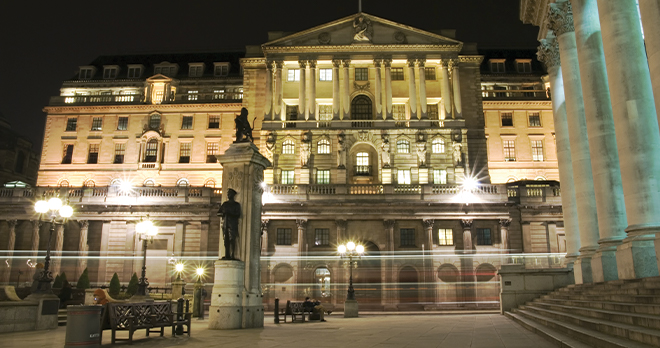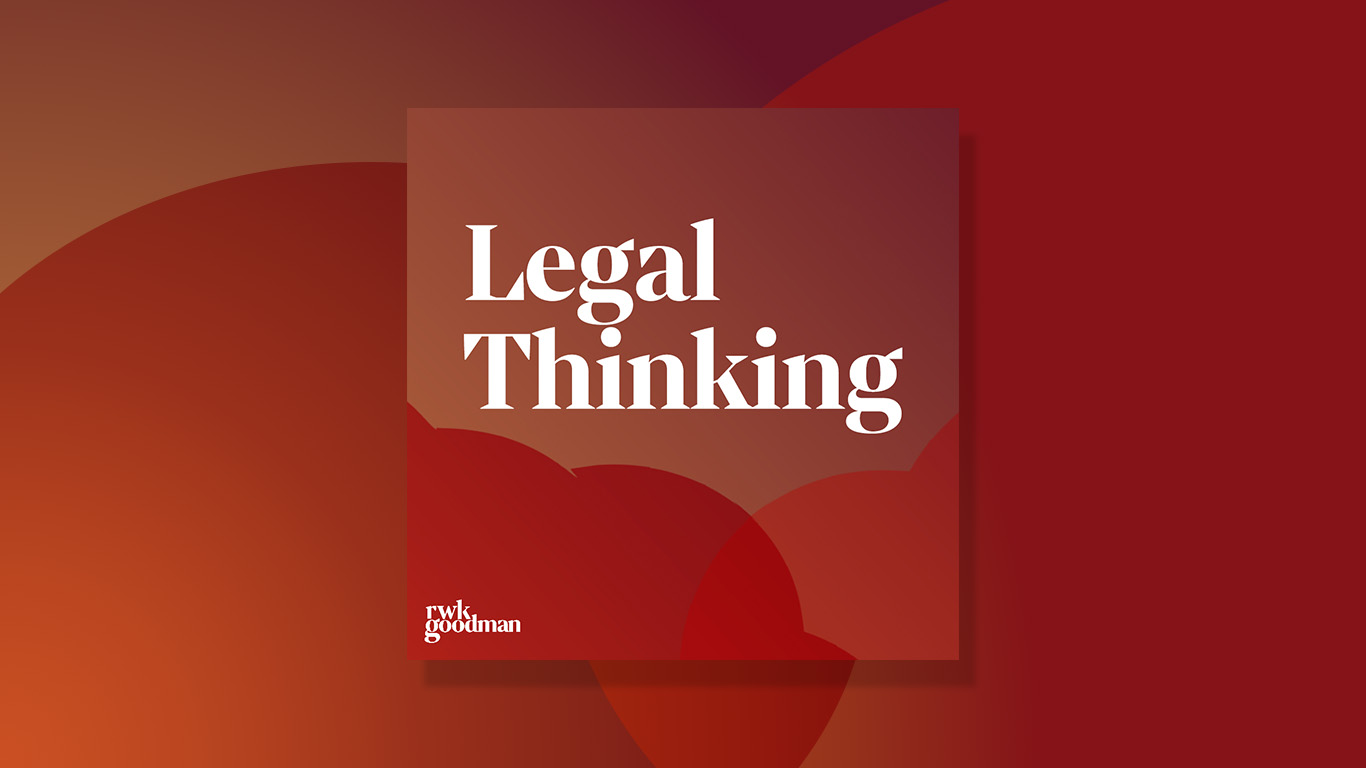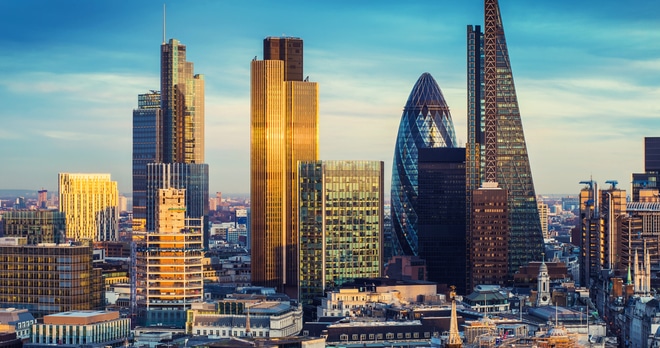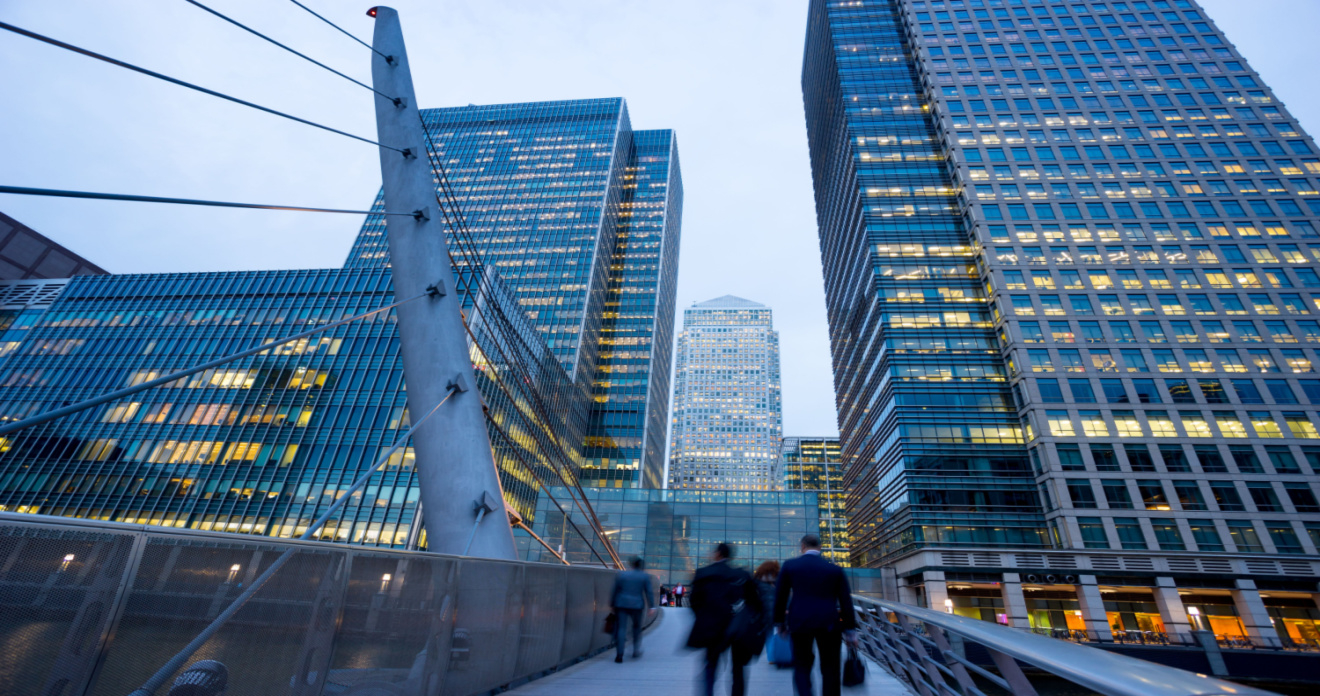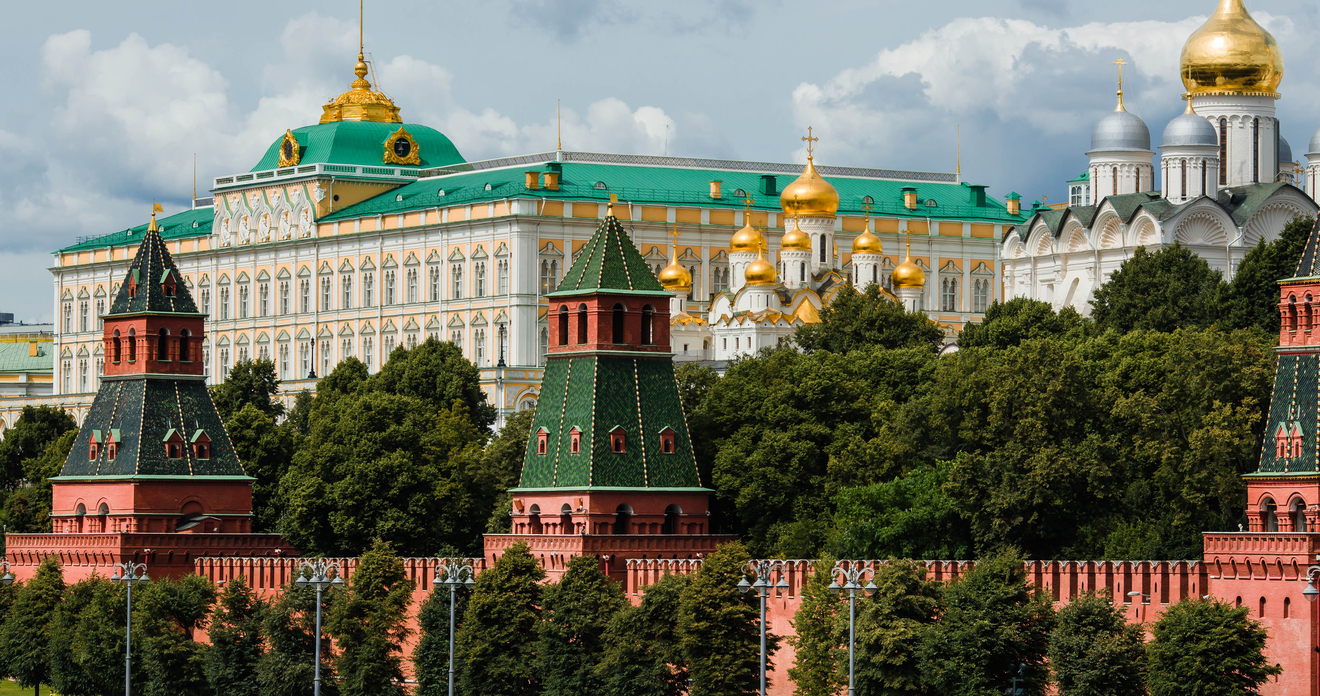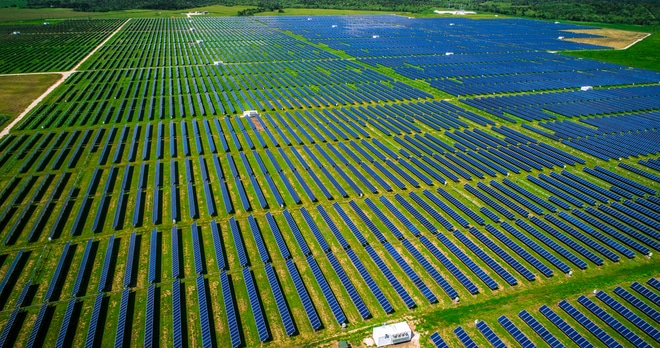Why everyone is talking about Silicon Valley Bank | Legal Thinking Podcast
You can also listen to our podcast on your podcast platform of choice - find it here >
Hello and welcome to Legal Thinking from RWK Goodman. I'm Liam Pape. In this episode we're joined by Milan Kapadia who is the Head of Dispute Resolution in our London Office and also the Head of our Banking Sector Group.
We discuss some very topical news which is the collapse of Silicon Valley Bank also known as SVB in California and what has unfolded since then. In this episode we talk about why it happened, what maybe made it more prone to happening there than other banks. It's also worth mentioning that we discuss the reported ring-fencing whereby that happened when HSBC purchased the UK arm of Silicon Valley Bank, but without any further ado let's roll tape.
So thank you for joining us Milan. If you could just start off by explaining what happened and give us a little bit of background?
Hello Liam and yeah I think just to start the discussion off it may make sense to go into the background of the bank a little bit. So Silicon Valley Bank was a Californian bank, founded in 1983. It was the 16th largest bank in America before its collapse. There is a separate UK division of the bank which is known as SVB UK which is I think what's triggered all the media and the press in England, and we're going to talk more about that in this podcast.
The main business of the bank was financing and banking for venture capital backed start-up companies and mostly tech companies as you'd expect with a bank called Silicon Valley. Venture capital firms did business there as well as several tech executives.
SVB at its peak had, even up to its end, provided finance for about half of all US venture-backed technology and healthcare companies so it was a really well established and popular bank there; and also in the UK where it had around three and a half thousand customers.
What also made it so popular in a sense was that it supported start-up companies that not all banks would accept or support because of the high risks associated with the start-ups; and then the pandemic came in 2020, it was a hot market for tech companies. Consumers are spending lots of money on digital services and electronics and tech companies had a large influx of cash and SVB was a popular choice to hold cash for these businesses, and the expenses such as the payroll.
This collapse of SVB is however the second largest failure in banking history since the global financial crisis back in 2007-2009.
So what went wrong earlier this month is really the big question. As I mentioned earlier, SVB's customers who were mostly tech start-up companies and it was the money of those investors that was deposited with the bank. This increased over the last few years with the booming tech sector and at the end of 2022 SVB as a global bank had assets of around 216 billion dollars, so it is not a small sum. In 2021 it had deposits of 116 billion so it's almost doubled over the last 12 to 15 months or so. It was these deposits and this cash that it was holding for customers that really I think gave rise to the issues, so it used… banks you know they typically do, they invest those deposits in various ways but over the last few months, I think a maximum of a year, they changed their investment strategy and so it changed from short term loans to investment and bonds and treasuries, and now these are long term investments that have you know a set life of the investment and a set interest rate, but the trouble is that they work conversely to interest rates and we all know what's happening with interest rates at the moment.
So with increasing interest rate rises, bond and treasury returns and values plummeted. So SVB's assets looks like they were depressing in value; and they had to raise capital to make sure they were meeting their regulatory requirements and this is where the problems started. So on 6 March of this year SVB tried to raise capital to the tune of 1.7 billion dollars, and when they publicised that and announced that, that sent a really bad message to the market that you know the bank was short on capital.
They then tried to sell the bonds and treasuries that they had previously invested in and reports suggest that they had to sell them at a huge loss so this affected their finances and their balance sheet. Had they held onto those bonds, this probably might have been avoided but you know the fire sale of those bonds really affected them. Word then spread, you know, got out in the media, and actually it was social media that compounded the speed of SVB's collapse. So these… the tech start-up companies that would deposit their money with the bank, they have their CEOs and their executives who are controlling all the money and they took the decision to go to the bank to withdraw their deposits as soon as the news of [SVB’s] fund raise hit the markets; and to make matters worse these CEOs and these tech executives started posting on Twitter which provoked the fear and the numbers of people wanting to withdraw their funds. So then by posting they were essentially fanning the flames of the bank run.
The share price in the US, of the bank, plummeted around 60% by the next day, so on 7 March and then the FTSE share values also dropped by around 2%, HSBC's share price in the UK, which we will come on to later, also dropped around 4%. So this is, you know, within 24 to 48 hours of this… the fund raise news becoming public and then you know two days later, so this is on 8 March, the bank collapsed and it was shut down by Californian regulators.
And what does the collapse mean for FinTechs, tech firms and other banks?
So the immediate impact of this is that the money that these tech start-ups were trying to withdraw or use; now that money was intended for their expenses, their business expenses and their payroll and the people of these companies, you know, the staff, are their life blood and failure to keep up those payments would have had a major ripple effect so the inability of the businesses, the bank’s customers, to withdraw their cash would have had a major ripple effect on those businesses; and the first thing that regulators do when banks fail is to have some sort of interim management and control over what happened with the funds and the deposits, and make sure that the problem doesn't become worse. The people that were affected by SVB's collapse are their customers but also their investors, I mean the investors in the shares of the banks and as I mentioned earlier the share values they dropped and essentially are worthless at the moment because the bank in America has gone into liquidation. Not the same in the UK but I'll come on to that in a second.
The customers however are protected by the Federal Deposit Insurance Corporation in America, and we have a similar scheme in the UK which protects deposit holders in the UK, but the investors were not. The concern now is for the tech and life sciences sector which has been hit by recessionary conditions and many of them were, and I think still are, cutting staff. SVB was one of their major supporters and with it now gone, start-ups may face funding issues if other banks are anxious about funding what are traditionally perceived to be risky businesses. So the start-up sector, and to give you the impact of the closure of SVB I think you know it's I can tell you some examples of other types of customers that they had and these… some of these are modern day household names and they are huge employers and you may be familiar with Etsy which is a major global online marketplace. They used to bank with SVB. You've got Roblox which is an online gaming platform which I only know too well 'cos my son spends far too much time playing it.
You've got Rocket Lab which is an aerospace manufacturer and you've got Roku which manufacturers media devices such as digital streaming; and you might ask about what remedies you know would have been available if the bank had folded.
So in the US the bank has folded and as I mentioned earlier the… the customers were protected by the FDIC. It has however transferred all deposits to an interim bank which has a snappy name of the Silicon Valley Bridge Bank so customers can have access to their funds and deposits from this interim bank.
In the UK had it gone into insolvency the 3,500 customers that I referred to for SVB UK, their deposits are protected under Financial Services Compensation Scheme up to a limit of £85,000 for a single account holder, and £170,000 for joint accounts and that includes companies; and customers would otherwise have had to go through the process of proving in the insolvency of the bank which takes into account any loans that they had to repay the bank. Now under the insolvency process they would have just received a dividend which is really only a percentage of available assets; and if you look back to the Lehman Brothers insolvency, the dividends and the payments out to creditors and customers of that bank only really started flowing out I think 10 years after the insolvency. So it takes a long time for that process to conclude and I did a bit of digging and it seems that current reports suggest that the bank's customers have average balances well in excess of 250,000 dollars or pounds in the UK I believe, so you know these are sizeable deposits for all of their customers.
So what was agreed in the HSBC bail out of Silicon Valley Bank, the UK arm of it, and is what happened common and how does a takeover for this type work?
Yes that's a good question Liam. So it's important to distinguish between the American and the UK operations of Silicon Valley Bank. HSBC has not acquired any of the US operations. The US Government will also not be bailing out SVB America. Now it will remain a collapsed bank and it closed on 10 March. I mentioned the interim bank that's been opened earlier; the US Government has however agreed to guarantee all deposits of those SVB customers, not including investors and unsecured creditors.
In the UK however the Bank of England did initially decide on 10 March to place SVB UK into insolvency and had that happened, our UK banking insolvency procedures would have come into play with liquidators being appointed and oversight and transfers being monitored by them. However, the UK Government did strike a last minute deal for HSBC to buy Silicon Valley Bank UK's operations saving thousands of British tech start-ups and investors from losses after what is the biggest bank failure since 2008.
This sort of arrangement isn't all that common which is probably a good thing as that's a sign that our banks are well managed and protected; and as part of the deal HSBC paid £1 for the assets of SVB UK. HSBC now has an additional 3,500 customers including venture capitalists and tech start-ups. SVB UK itself was profitable and last year made profits of £88m and held around £6.7bn in deposits. The addition of SVB UK to HSBC only really comprised around 1% of HSBC's overall business, so in the scheme of things it's not a huge addition to HSBC's business but it's definitely an important part of the banking sector and you know to avoid the start… the collapse of SVB UK and abandoning all those customers.
What this all really means is that the risks to public funds, and therefore us the taxpayers, is limited by ensuring that to the extent that there are losses within SVB UK, it’ll be the shareholders and the creditors of HSBC that will bear those and not the deposit holders of SVB UK who would have claimed under the compensation schemes or the insolvency of the bank had the transfer to HSBC not been approved.
So what does the ring-fencing waiver from the Government mean and is this a statement of intent given other proposed reforms, or is it standard?
So the ring-fencing waiver from the Government, that is something that was introduced after the global financial crisis from 2007 to 2009. Legislation was introduced to ensure the better management of banks and this included something called ring-fencing, which aims to protect UK retail banking from shocks in other groups and other financial markets. In other words core banking, which is the taking of deposits from customers, people like you and I, making the payments within the banking system, the giving of overdrafts you know to individuals and small businesses. All of that has to be treated as financially and operationally separate from the investment banking and international banking activities of the bank; and it's almost like ensuring the right hand doesn't take from the left hand.
The exception to this rule was brought in last week by temporary legislation and it involved the reduction of some of SVB UK's capital instruments and allowed some complicated corporate customers to basically be housed within the ring-fenced part of the business; and this enabled the transfer of the assets at HSBC. I think this is a statement of intent and you know it's a sign that the Government really… and the Bank of England really didn’t want this bank to fail; and it's it's also a sign of the Government- I mean if you do some reading in the white papers, the Government did sit long hours over the weekend to try and introduce this emergency law and they really wanted to not only support the bank but to support the tech and life sciences sector which they see as a really important part of the world economy. So it was a statement of intent on multiple levels. I think we might see some further legislation and regulation to manage some of the risks of banks but yes this was a very intentional and well co-ordinated and planned move by the Bank of England and the UK Government.
And finally: you touched upon this a little bit earlier, but Silicon Valley Bank was extremely popular amongst tech start-ups and tech companies, and their offering made it appeal to those kinds of businesses, but appealing to tech start-ups, is that not a little bit risky and does that not make them more prone to collapse?
Possibly, but I don’t think this is what caused the collapse on this occasion.
I think there were a combination of factors. The tech sector is a risky sector what with the high rate of attrition in businesses that don’t make it past the first year. Further the heavy reliance on venture capital makes the longevity of these businesses difficult to predict; but when venture capital dries up these companies need to start using their own cash reserves and that's when the banks need access to large sums of money. There are issues with venture capital drying up at the moment but the combination of interest and investments of the bonds that I referred to earlier by Silicon Valley Bank, and the social media panic and the rush of customers wishing to withdraw their money.
All of that I think triggered a negative bank run and the panic that ultimately led to the demise of the banks and there are regulations that require the banks to keep a certain amount of capital in the bank, so it was a combination of all of those things, not specifically just the fact that tech start-ups was their… were their customers so you know there need to be rules and regulations to manage the investments. There need to be rules and regulations to maybe manage social media which we know is a very tricky thing with Elon Musk's recent acquisition of it; and so yeah I think it's… it does make these banks maybe slightly more risky but I think the lesson to be learned is that the financial system is still quite fragile and more fragile than the public have been led to believe I think that you know there is a chance that we might see more regulation and scrutiny which might have a wider impact on the economy.
Milan, thank you very much for your time.

Subscribe to Legal Thinking
Want to hear more from our podcast?
Find out where you can subscribe and check our our back catalogue right here on our website.
